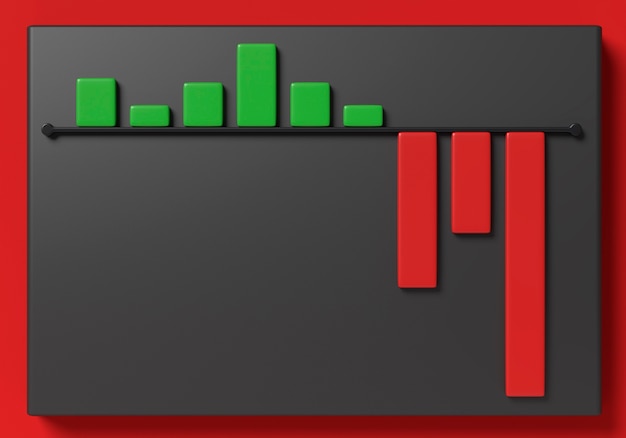Refinance Personal Loans Now: Lock in Low Rates Before Q3 2025

Refinancing your personal loans now can help you secure lower interest rates before the anticipated rise in Q3 2025, potentially saving you money and improving your financial stability.
Don’t wait for interest rates on personal loans to climb! Now is the time to refinance your personal loans now: Secure lower interest rates before they rise again in Q3 2025 and potentially save thousands of dollars.
Why Refinance Your Personal Loans Now?
Refinancing your personal loans means replacing your existing loan with a new one, ideally with more favorable terms. This can translate to a lower interest rate, a more manageable monthly payment, or a shorter repayment term. But why is now specifically a good time to consider refinancing?
The financial landscape is constantly shifting. Understanding these shifts can help you make informed decisions about your personal finances. The anticipation of rising interest rates in Q3 2025, driven by various economic factors, presents a pressing reason to act now.
Understanding the Impending Interest Rate Hike
Interest rates are influenced by a variety of economic indicators including inflation, unemployment rates, and Federal Reserve policies. Monitoring these factors provides insight into potential rate changes. Keeping an eye on market trends and expert predictions suggests a probable increase in interest rates by Q3 2025.
- Inflationary Pressures: Persisting inflation may prompt the Federal Reserve to raise interest rates to curb spending and stabilize prices.
- Economic Growth: Strong economic growth can lead to increased demand for credit, pushing interest rates higher.
- Federal Reserve Actions: The Federal Reserve’s monetary policy decisions directly impact interest rates across various sectors, including personal loans.
Waiting for rates to increase before refinancing can lead to higher monthly payments and increased overall costs. By acting now, you can take advantage of current, lower rates. This proactive approach can save you money and ensure your financial stability moving forward.

In conclusion, understanding the potential for rising rates in Q3 2025 makes refinancing your personal loans now a strategic financial decision. By taking advantage of current low interest rates, you can significantly reduce your monthly payments and save money over the life of your loan.
Benefits of Refinancing Your Personal Loans
Refinancing can offer several advantages that extend beyond just a lower interest rate. It’s about optimizing your financial health and ensuring your loan terms align with your current circumstances. Let’s explore the range of benefits you might experience.
The primary benefit of refinancing is securing a lower interest rate, which directly reduces your monthly payments and the total amount you pay over the life of the loan. However, refinancing can also help you consolidate debt, simplify your finances, and even free up cash flow.
Lower Monthly Payments
One of the most immediate benefits of refinancing is the potential to lower your monthly payments. This is especially beneficial if you are struggling to manage your current debt obligations. A lower monthly payment can free up cash for other financial goals.
Aside from a lower interest rate, extending the loan term during refinancing can further reduce your monthly payments. Keep in mind that while your monthly payments may be lower, you could end up paying more in interest over the longer loan term. Understanding the trade-off is crucial.
Debt Consolidation
Debt consolidation involves combining multiple debts into a single new loan. Refinancing can be an effective tool for debt consolidation, simplifying your finances and making debt management easier. Keeping track of one payment can reduce stress and the risk of missed payments.
- Simplified Finances: Manage a single loan instead of multiple debts, streamlining your financial life.
- Potentially Lower Interest Rate: Secure a lower rate on the consolidated loan compared to the average of your existing debts.
- Improved Credit Score: By simplifying debt management and making timely payments, you can improve your credit score.
Refinancing your personal loans can lead to substantial financial improvements. Lower monthly payments, debt consolidation, and better loan terms all contribute to a healthier financial life. Evaluating your options and choosing the right refinancing strategy can make a significant difference.
How to Determine if Refinancing Is Right for You
Deciding whether to refinance involves carefully evaluating your current financial situation and future goals. It’s essential to consider factors such as your credit score, existing loan terms, and potential savings. Here’s a guide to determining if refinancing is a smart move for you.
Start by assessing your credit score. A good to excellent credit score typically qualifies you for the best interest rates. Also, compare your current loan terms with potential new terms to identify potential savings. Calculate your break-even point to ensure refinancing is financially beneficial.

Evaluate Your Credit Score
Your credit score is a primary factor in determining the interest rate you’ll receive on a refinanced loan. Check your credit report for any errors and address them before applying for refinancing. A higher credit score generally leads to more favorable loan terms.
If your credit score has improved since you took out your original loan, you may be eligible for a significantly lower interest rate. This makes refinancing an attractive option. Monitoring your credit score regularly is a good financial habit.
Compare Current and Potential Loan Terms
Compare the interest rate, monthly payment, and loan term of your current loan with the potential terms of a refinanced loan. Use online calculators to estimate your savings. Consider all fees associated with refinancing, such as origination fees and prepayment penalties.
- Interest Rate Comparison: Calculate the total interest paid over the life of both loans to see the long-term savings.
- Monthly Payment Analysis: Determine if the lower monthly payment justifies any additional fees.
- Loan Term Assessment: Evaluate whether a shorter or longer loan term better fits your financial goals.
Assessing your financial situation and understanding the math behind refinancing is crucial. Evaluate your credit score, compare potential loan terms, and calculate your savings. By carefully considering these factors, you can make an informed decision about whether refinancing is the right choice for you.
Steps to Refinance Your Personal Loan
Refinancing a personal loan involves several steps, from gathering necessary documentation to finalizing the new loan. Here’s a step-by-step guide to help you navigate the process smoothly.
First, gather all necessary financial documents, including proof of income, bank statements, and your Social Security number. Then, shop around and compare offers from different lenders to find the best interest rate and terms. Finally, submit your application and await approval.
Gather Necessary Documentation
Lenders require specific documentation to verify your identity, income, and financial stability. Having these documents ready beforehand can speed up the application process. The required paperwork may vary depending on the lender.
Typical documents include:
- Proof of Income: Pay stubs, W-2 forms, or tax returns.
- Bank Statements: Recent statements showing transaction history.
- Identification: Driver’s license or passport.
Shop Around for the Best Rates
Comparing offers from multiple lenders is essential to securing the best interest rate and loan terms. Look beyond just the interest rate and consider the fees and other terms associated with each loan. Online comparison tools can help streamline this process.
The best approach is to get pre-approved by several lenders. This will give you a clear understanding of the interest rates and terms you qualify for. It also allows you to compare offers side-by-side. Negotiate with lenders if you receive multiple offers.
The refinancing process requires organization, research, and patience. By gathering necessary documents, comparing loan offers, and understanding the fine print, you can successfully refinance your personal loan and secure better financial terms.
Common Mistakes to Avoid When Refinancing
Refinancing a personal loan can be a beneficial financial move, but it’s crucial to avoid common mistakes that can undermine your efforts. Being aware of these pitfalls can help you make informed decisions and maximize your savings.
Many borrowers focus solely on the interest rate and overlook other important fees and loan terms. Additionally, failing to shop around for the best offers can result in missing out on potential savings. It’s also vital to accurately assess your ability to repay the new loan.
Focusing Solely on the Interest Rate
While the interest rate is a significant factor, it’s not the only element to consider when refinancing. Pay attention to fees, such as origination fees, prepayment penalties, and other charges. These fees can add up and diminish the benefits of a lower interest rate.
- Calculate Total Loan Cost: Compare the total cost of the loan, including all fees and interest.
- Consider Loan Term: Evaluate how the loan term affects your monthly payments and total interest paid.
- Read the Fine Print: Understand all the terms and conditions of the loan agreement.
Failing to Shop Around
Settling for the first offer you receive can result in missing out on potentially better deals. Different lenders offer varying interest rates and terms, so it’s essential to compare multiple offers. Online comparison tools can simplify this process.
Aim to get pre-approved by at least three to five different lenders. This will give you a clear sense of the available interest rates and terms. It also allows you to negotiate with lenders for the best possible deal.
Avoiding common refinancing mistakes requires diligence and an understanding of all loan terms. By looking beyond the interest rate, shopping around for the best offers, and accurately assessing your repayment ability, you can ensure a successful refinancing experience.
Future Financial Planning After Refinancing
Refinancing your personal loan isn’t just about securing a better interest rate; it’s also an opportunity to re-evaluate your financial goals and plan for the future. Use the savings from refinancing to improve your overall financial health.
Consider setting up an emergency fund or paying down other high-interest debt. You can also invest the savings to grow your wealth over time. Refinancing can be a catalyst for more comprehensive financial planning.
Building an Emergency Fund
An emergency fund provides a financial cushion for unexpected expenses, such as medical bills or job loss. Aim to save three to six months’ worth of living expenses in an easily accessible account. Building an emergency fund reduces your reliance on debt in times of need.
Direct a portion of the savings from your refinanced loan into your emergency fund. Even small contributions can add up over time. Consider automating regular transfers to make saving easier.
Paying Down Other High-Interest Debt
Use the savings from refinancing to aggressively pay down other high-interest debt, such as credit card balances. Reducing your overall debt burden can improve your credit score and free up more cash flow. Prioritize debts with the highest interest rates.
- Debt Snowball Method: Pay off the smallest debt first, regardless of interest rate.
- Debt Avalanche Method: Prioritize debts with the highest interest rates.
- Balance Transfers: Consider transferring high-interest credit card balances to a lower-interest card.
Refinancing your personal loan is a strategic move that can create new opportunities for financial growth. Use the savings wisely to build an emergency fund, pay down high-interest debt, and invest for the future. A well-thought-out financial plan can ensure a secure and prosperous future.
| Key Point | Brief Description |
|---|---|
| 💰 Lower Interest Rates | Refinancing now can secure lower rates before the Q3 2025 increase. |
| ✅ Debt Consolidation | Combine multiple debts into a single, manageable loan. |
| 📈 Credit Score Impact | Improved credit score can qualify you for better refinancing terms. |
| 📊 Financial Planning | Use savings to build an emergency fund or pay off other debts. |
Frequently Asked Questions (FAQ)
▼
Refinancing a personal loan means taking out a new loan to pay off your existing one, potentially with better terms such as a lower interest rate or more favorable repayment schedule.
▼
The best time to refinance is when interest rates are lower than your current loan’s rate, or when your credit score has improved significantly, allowing access to better terms.
▼
While approval standards can vary, most lenders prefer a credit score of 660 or higher to qualify for good refinancing terms, with the best rates often reserved for scores above 700.
▼
Yes, some lenders may charge origination fees, application fees, or prepayment penalties. Always compare the total cost of the new loan, including fees, to ensure it’s beneficial.
▼
The refinancing process can take anywhere from a few days to a few weeks, depending on the lender and the complexity of your financial situation. Gathering necessary documents promptly helps expedite the process.
Conclusion
Refinancing your personal loans now to secure lower interest rates before they potentially rise in Q3 2025 can be a smart financial move. By understanding the benefits, evaluating your financial situation, and avoiding common mistakes, you can optimize your loan terms and achieve greater financial stability and peace of mind.





